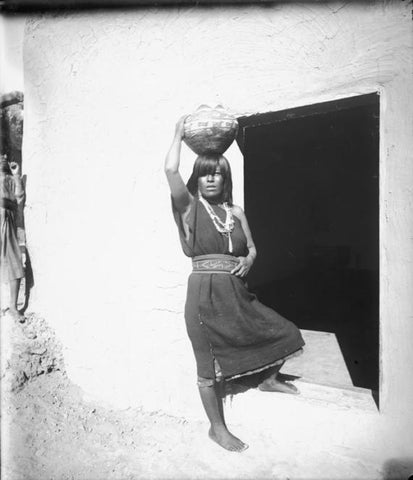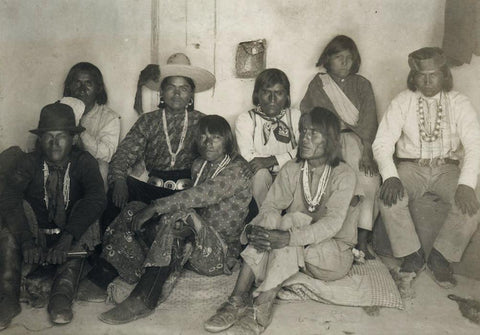All about the Zia Pueblo
Zia Pueblo sits on the Jemez River, some thirty miles north of Albuquerque. The roots of this long-standing community run deep into the land around it, and the symbol of its people’s spiritual beliefs extend far across the state of New Mexico through the Zia Sun symbol. The state began using the Zia symbol on their flag in 1925 and now incorporate it into their drivers’ licenses as well. Both modern and ancient, Zia Pueblo inhabits both worlds through its commitment to its culture and its engagement with the evolving world around it.

The people of Zia Pueblo belong to the group known as Keresans, due to the fact that they speak Keres. Keresans are believed to have once lived in the area surrounding Chaco Canyon. Migrating out of the canyon due to climate issues such as drought along with other changes, the ancestors of Zia left their homes to settle in what the Spanish called pueblos further along the Rio Grande. They built cities in the desert, some having thousands of people living in and around them. A number of sites dated in the 1200s have been associated with the ancestors of the Zia people. One was described by a Spanish explorer as “a large city with eight plazas, over 1000 two- to three-story houses, and a population of at least 5,000 and perhaps as many as 20,000.”
Years of oppression by those determined to conquer the people and claim the area followed the years of migration. The harsh treatment did not dim the people of Zia’s connection to their homeland and they fought to remain in their community there. Their persistence paid off, and though their numbers are much smaller today, most remain living on the pueblo and continue to speak their own language. Modern-day Zia covers over 120,000 acres and is governed by two tribal councils. Raising livestock remains an important economic activity, though many choose to work outside the pueblo. Oil and natural gas resources also help maintain the community.

Another tradition that has remained is the distinctive pottery produced by artists from Zia. Clay used in the pottery is from the pueblo, and it turns a deep red color when fired. Applying a white slip to the pots creates a more buff-colored surface for their designs. Though sometimes the Zia sun symbol is used, most of the designs incorporate what is called a “sky band”, a stripe of color used to frame other designs, such as geometric or floral images. Another often-used design is the Zia bird, with raised wings and large eyes.
Zia potters are not only preserving their culture through their art, but they have also in the past preserved the village itself. In the early years of the twentieth century, there were epidemics of smallpox and Spanish flu which brought death and despair to many areas of the southwest, including Zia. People struggled to survive, and Zia potters helped out by selling their pots and bowls or bartering them for food to help out those who were struggling in the village. It was a continuation of the long history of the true community that has made Zia Pueblo the place it is today.
Resources:
http://zia.com/home/zia_info.html
http://what-when-how.com/native-americans/zia-pueblo-native-americans-of-the-southwest/
https://www.newmexico.org/places-to-go/native-culture/zia-pueblo/
https://www.palmstrading.com/native-american-pottery/zia-pueblo-pottery/
https://wheelwright.org/exhibitions/the-potters-of-zia-pueblo-1700-2004/
https://www.facebook.com/pg/NNAIOP/photos/?tab=album&album_id=10150394657360578












